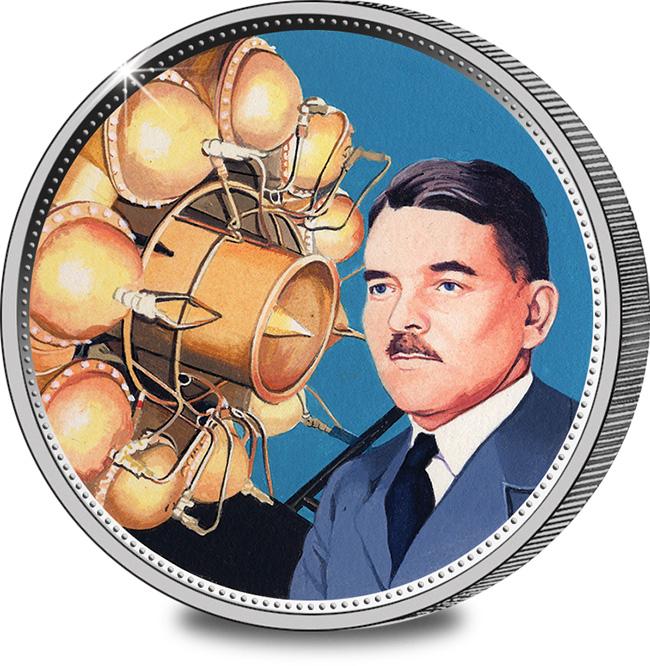
 |
Full name: Sir Frank Whittle
Born: 1st June 1907
Invention/Achievement: The Jet
Engine
Date of introduction/Achievement: First
flight 15th May 1941
Died: 9th August 1996
|
Frank Whittle, whose genius was to transform aviation, was
initially rejected by the Royal Air Force, failing his physical.
Determined to become a pilot, he worked on his physique and
was accepted, joining No. 1 Squadron of Cranwell Aircraft
Apprentices on a three year course as an aircraft mechanic.
Despite finding the discipline irksome, Whittle soon
displayed his mastery of the theory and practice of aircraft
engineering.
An astute commanding officer noticed this and his exceptional
mathematical ability and obtained a place for him on an officer
training course at RAF Cranwell. Once again he proved to be
an outstanding student. Training on the Avro 504 he went solo
after 13.5 hours and progressed to the Bristol fighter.
He was however reprimanded several times for his unsanctioned
aerobatics and daredevil flying. Nevertheless, he graduated
in 1928 aged 21, second in his intake. For his course thesis
on "Future Developments in Aircraft Design", he envisaged aircraft
powered by compressed air from a conventional internal combustion
engine. He realised this was impractical and considered the
idea of a turbine as compressor. He developed the idea during
his postings to 111 Squadron at Hendon and an instructor's course
at Wittering. He took his ideas to the Air Ministry but they
weren't interested.
In 1934 Whittle took a two-year engineering course at Peterhouse
College, Cambridge. With the assistance of two former RAF
colleagues, backing from British Thompson Houston and bank finance
he formed Power Jets Ltd.
The Air Ministry still showed no interest and the company ran
into financial difficulties. Despite this, in 1937 a
prototype was produced and by 1939 official backing was forthcoming
and work started on the "Whittle Supercharger Type W.1".
In 1940 the Ministry contracted the Gloster Aircraft Company to
produce an aircraft to use Whittle's jet engine. Gloster
E28/39 first flew on 15th May 1941 for 17 minutes.
In 1944 the Gloster Meteor Jet Fighter went into service with
the RAF.
In 1948, Whittle retired from the RAF and was knighted. He
worked for BOAC, Shell Oil and Bristol Aero Engines before
emigrating to the USA, where he died in 1996.